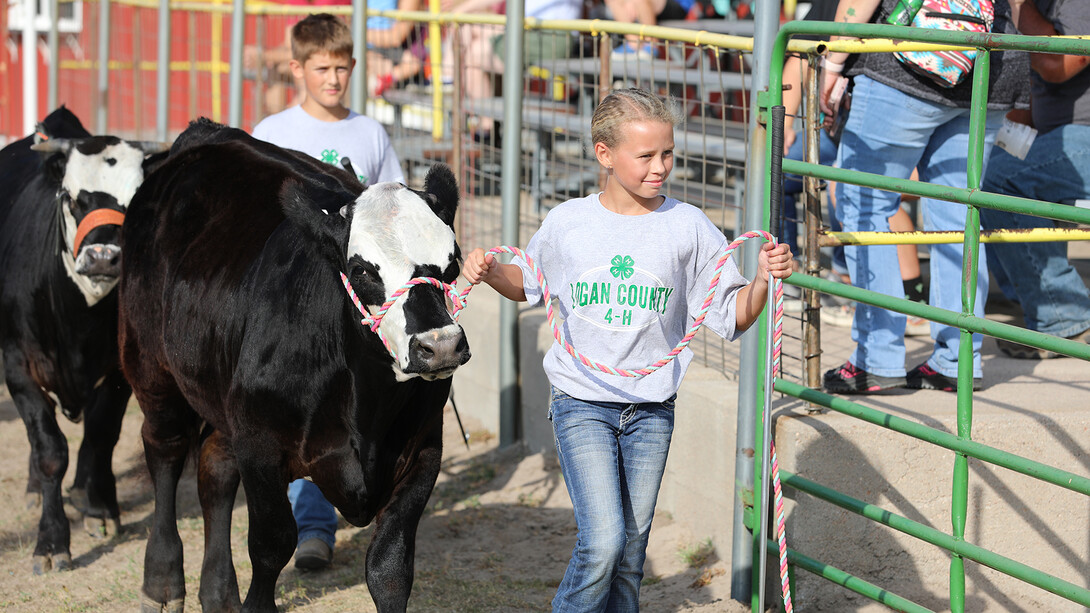
America’s cattle sector could benefit greatly by adopting a set standard for proficiency levels in animal care and handling. University of Nebraska–Lincoln scientist Ruth Woiwode, drawing on her expertise in animal behavior, is working to address that challenge.
Woiwode, assistant professor of animal behavior and welfare in the Department of Animal Science, has developed a multi-step approach to teaching cattle-handling techniques based on key findings regarding animal behavior. She demonstrated those techniques during a recent gathering of 4-H educators for a two-day set of sessions at Nebraska’s Animal Science Complex.
Brett Kreifels, a 4-H educator for Douglas and Sarpy counties, said his background is in poultry rather than cattle, but he was impressed “to see how she was able to take those cattle and move them exactly where she wanted them and did it very effortlessly.”
Among those who observed her demonstration was Temple Grandin, a Colorado State University professor and noted expert in animal behavior. Grandin was Woiwode’s academic adviser during Woiwode’s graduate study at Colorado State. Woiwode’s cattle-handling techniques draw in large part on insights Grandin has provided during her decades-long study of animal behavior.
In watching Woiwode’s demonstration, Grandin noted that the Husker scientist’s techniques had kept the cattle calm while directing them from one gate to another and, in one instance, separating one calf from the rest.
Afterward, 4-H educators said such training, perhaps via video, could have great value in helping children learn effective animal-handling techniques.
One task in Woiwode’s cattle-handling approach involves moving a group of cattle through a gate and closing it, then moving the cattle in a straight line and stopping them at a designated point. Mistakes to be avoided include moving the cattle too fast, causing them to run; scattering the cattle; and cattle running into fences.
In her writings about the training approach, Woiwode has noted the principle that the cattle industry “cannot manage its quality problems until it can measure them.” That principle has served as a central guide for the Beef Quality Assurance program.
Training in husbandry and stockmanship skills traditionally has been passed down from generation to generation, but in modern times, many prospective employees are entering the cattle sector without that background. A standardized approach can provide certainty in training and facilitate efficiency in workforce development.
Such an approach also can build trust with the public, given the public’s increased interest in animal welfare. Another benefit is improved long-term impact on animals, since academic study has shown that handling, positive or negative, can have a cumulative long-term effect on an animal.
Woiwode, with faculty positions in teaching, research and extension, holds certifications for dairy, swine, poultry, meat plant and feedlot animal welfare auditing. Prior to joining Nebraska, she led a team in auditing entire supply chains. She serves on the Animal Welfare Committee and Small Plant Task Force for the North American Meat Institute, the Nebraska Feedyard Safety Advisory Committee, and the Faculty Advisory Committee for Nebraska’s Beef Innovation Hub.







